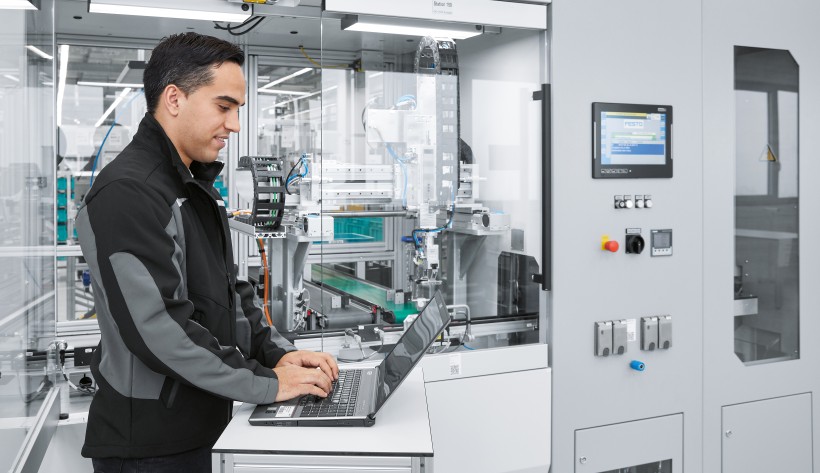Learn About the Benefits of Cartesian Robots

If you think all robots need to have an articulating arm, your thinking could cost you. The truth is, the vast majority of industrial robotic applications require four or less axes—making them a perfect fit for Cartesian robots. These systems offer many benefits in terms of design, cost and flexibility.
Pay Only For What You Need
Usually available as a complete package, articulated arm robots come with more functions and degrees of freedom than what’s required for your application—which means you end up paying for features you don’t need. That’s where Cartesian systems come in: if you need only two axes, you specify and pay for two axes—no more, no less. Not only does this save you cost, but it also makes maintenance easy.
Let’s take a look at some of the other benefits of Cartesian systems:
Suitable for a wide range of applications. Cartesian robots are ideal for pick-and-place applications, which require only X, Y and Z axes. You can even add a rotational axis on the end of the Z—bringing the number of axes up to four. For most industrial applications, including pick and place, 2D machining and palletizing, this amount of axes is more than enough. These systems are also highly precise, can handle high payloads and can reduce your equipment footprint.
Easy to customize and maintain. Cartesian robots are easy to customize in terms of speed, precision and number of axes. And when it comes to maintenance, most technicians can handle repairing or replacing components—whether it be an axis, drive or motor. Technicians don’t have to learn a new programming language or take the entire system back to the OEM, which is what happens with more complex robotic systems.
No need for a specific controller. Cartesian systems can be controlled using a simple PLC for point-to-point movement as opposed to articulated arm robots, which always require complex robotic control systems and programming. This point-to-point movement removes the need for a specific controller—and the complexities associated with component interoperability.
The Limitations of Cartesian Robots
While Cartesian robots will get the job done in most industrial applications, keep in mind that they require precise alignment to maximize their service life. You’ll also have to pay attention to surface flatness during installation. But that being said, Cartesian systems can bring your industrial application many benefits—all while avoiding unnecessary costs and complexities.
Learn More
At Festo, we offer a variety of single- and double-axis Cartesian systems, as well as 2D and 3D gantry robots. We’ll even commission your system onsite—quickly, reliably and already adjusted for maximum performance. Visit our Cartesian robot webpage to get started.
